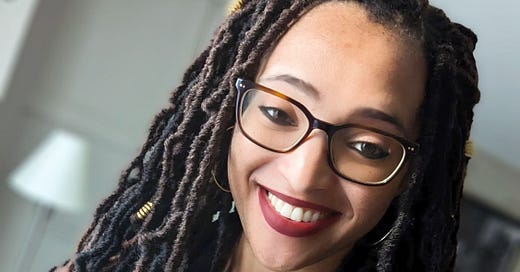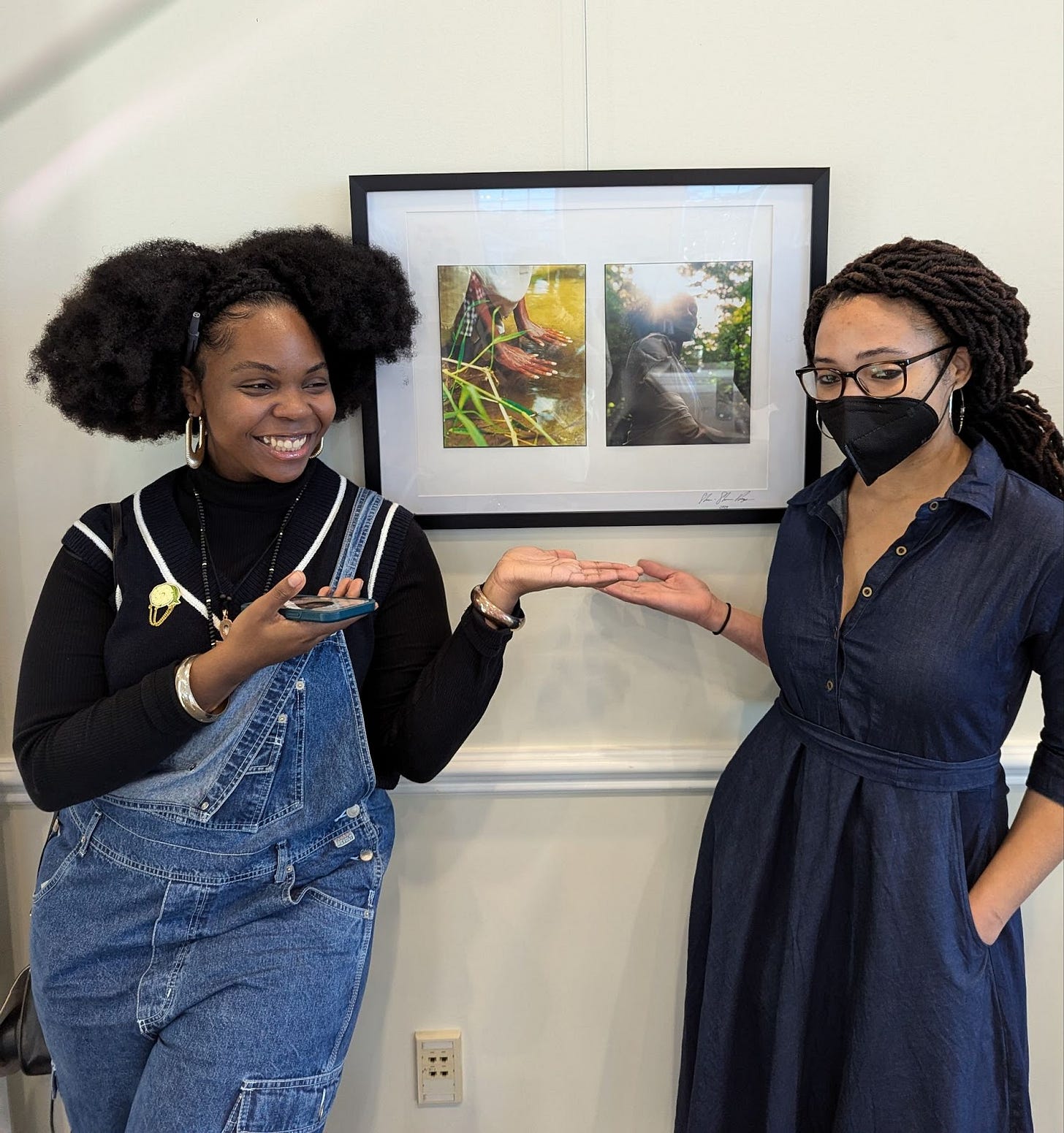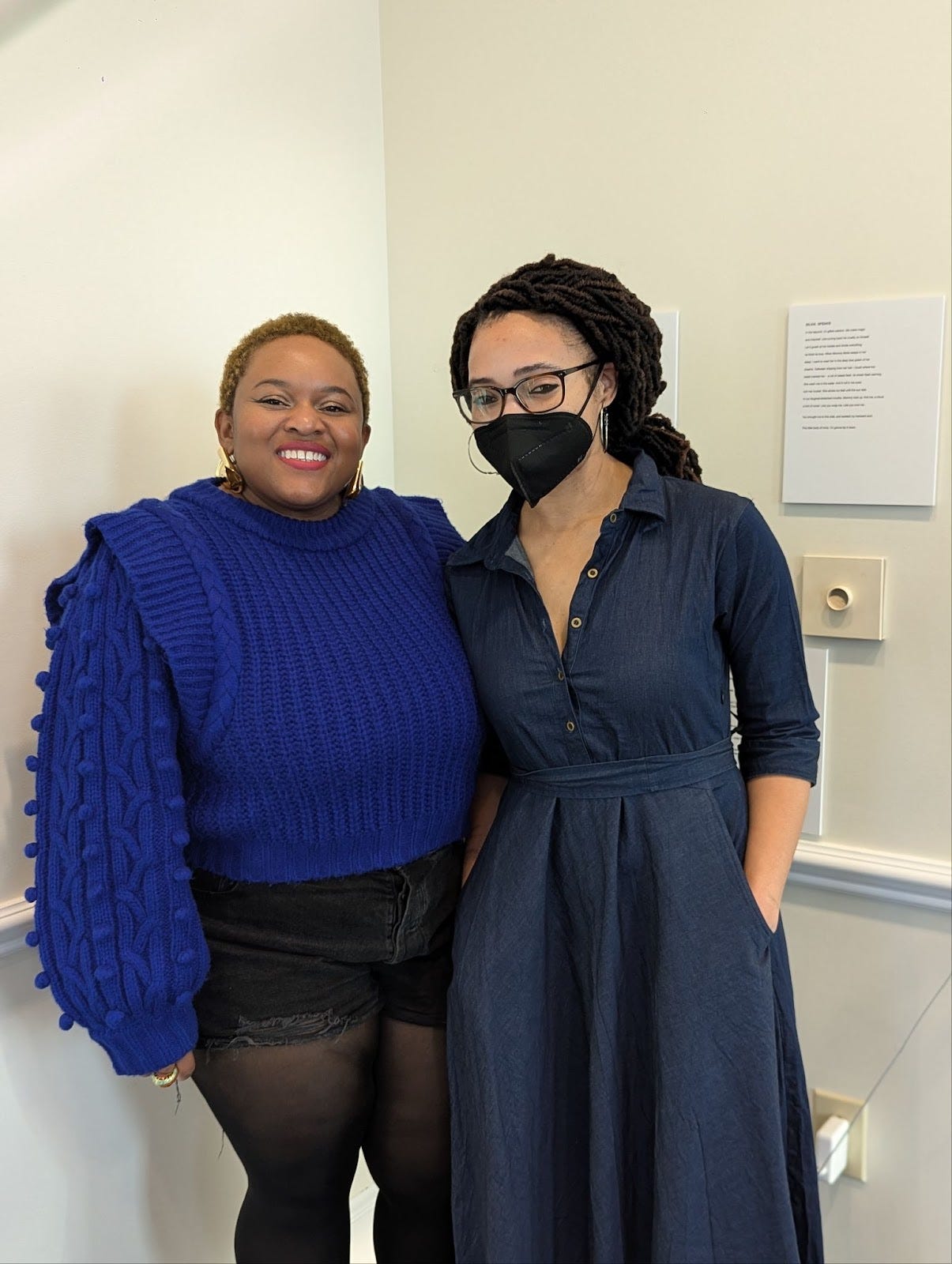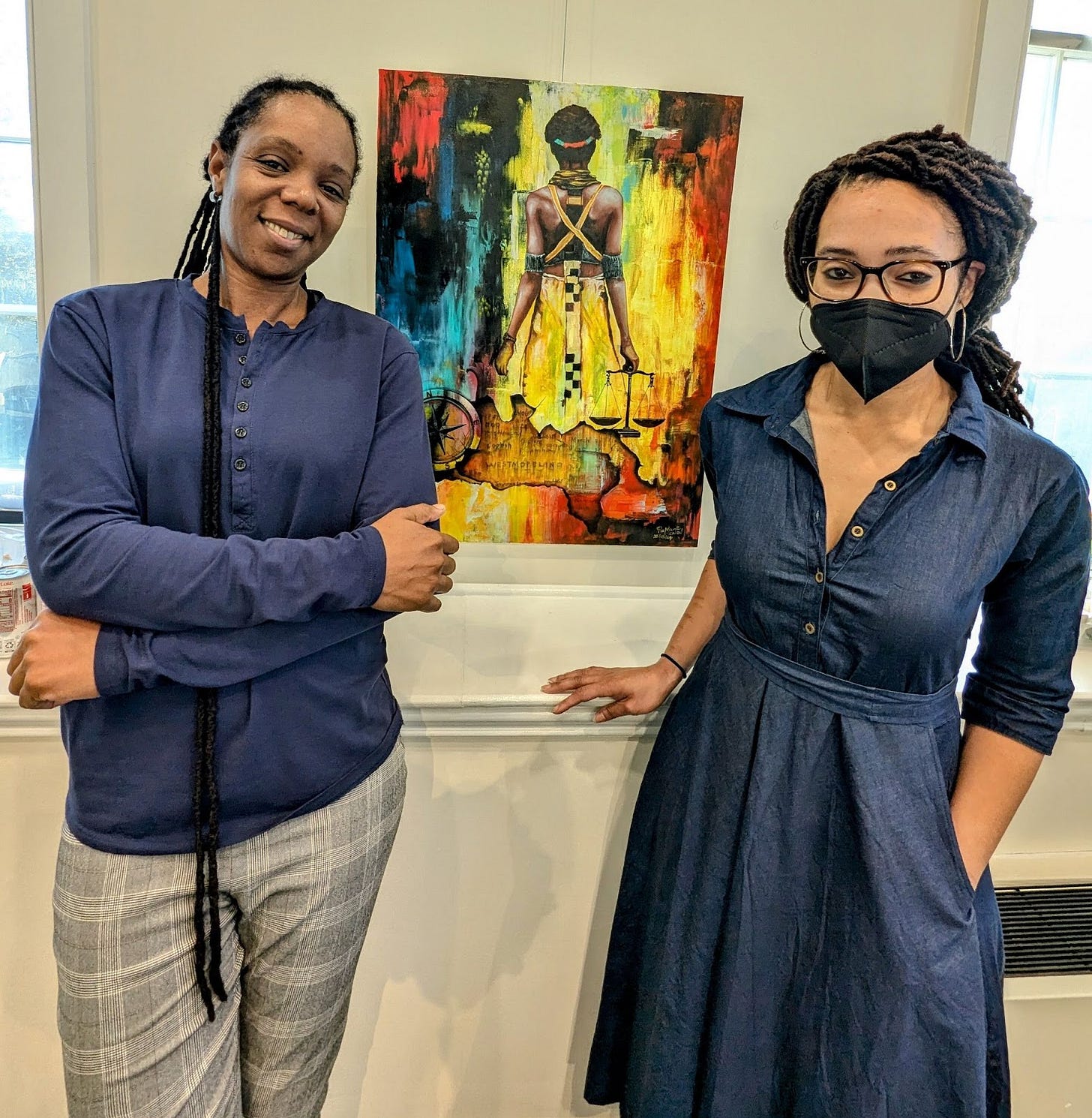Dive into the Ecosystem: Jessica Newby
The co-lead of Remains // an Archive tells us about the lab's art exhibition, the importance of centering relationships between enslaved people in her writing, and the family photos that inspire her.
Introduce yourself. Are you a student, postdoc, faculty? With what institution? What do you do with LifexCode?
My name is Jessica Newby and I am a 4th year PhD candidate in the Department of History at Johns Hopkins University. I’m a part of a broader ecosystem/archipelago of LifexCode, which includes the Diaspora Solidarities Lab - we call it the DSL - which is a Mellon-funded, Black feminist partnership initiative led by PI Dr. Yomaira Figeuroa Vasquez and Dr. Jessica Marie Johnson. It’s spread across multiple universities and a number of labs comprised of undergrads, graduate students, faculty, and community partners.
How long have you been involved with LifexCode? What inspired you to join?
I came in as a Solidarity Fellow in 2022. For me, all roads lead back to Dr. Johnson, who is one of my dissertation advisors. She is involved in so many different things that I admire, but LifexCode was key among them. I remember being inspired as a first year graduate by the work that I saw her doing in LifexCode, and by the work of other Black graduate students in the Hopkins History department who were under the LifexCode umbrella, like the now-Dr. Christina Thomas, the now-Dr. Kelsey Moore, and the soon-to-be Dr. Halle Ashby. I was able to see projects like Keywords for Black Louisiana, Electric Marronnage, Archipelagos of Marronage, and was very intrigued by them.
What does it mean to be a Solidarity Fellow?
The title Solidarity Fellow emphasizes one of the DSL’s values, which is solidarity and partnership across disciplines and partnership between the academy and community. It’s meant to bring that ethic of care to our own scholarship and the projects we create within our micro-labs. The methods of building and showing solidarity and the solidarity you form with fellows and community partners vary in creative ways across different labs.
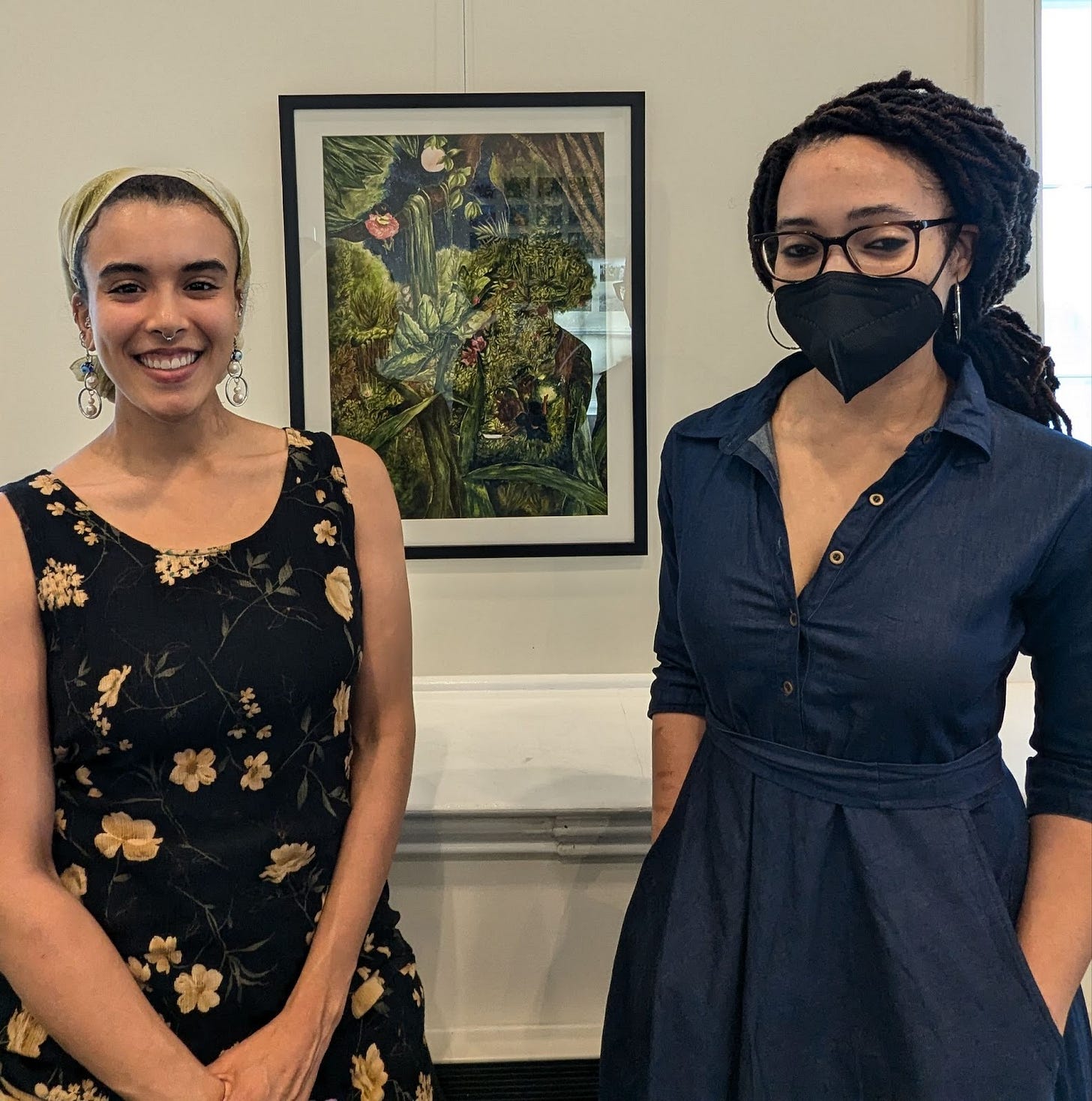
Tell me about your lab or project and your role in it.
My entrance into LifexCode coincided with my entrance into the DSL. In the Fall of 2022, my fellow Solidarity Fellow Kevin Ah-Sen and I created the Remains // an Archive micro-lab, which is a part of the DSL’s Community Knowledge Lab (CKL). The DSL has two big labs that are comprised of smaller micro-labs; you can think of it like a tree with branches that grow and extend, and also spread seeds that grow elsewhere. The biggest ‘branches’ of DSL are the CKL and the Open Boat Lab, and then those have smaller branches and seeds.
Remains is grounded in Black feminist thought, and it’s a lab of scholars from different disciplines and different institutions. I’m studying for a PhD in History here at JHU, Kevin is in the Department of Faculty of Education at McGill University, and Samantha Stephens (current Solidarity Fellow) is in the Department of English at the University of Virginia. As a collective, we enact interdisciplinary practices to collaborate on projects that are grounded in real and conceptual grief through various mediums in the arts, digital storymapping, and curation. Our core philosophy is rooted in Black feminist thought, so we’re inspired by the work of scholars like Saidiya Hartman, Marisa Fuentes, Elizabeth Alexander, and Jennifer Nash, among others. As a micro-lab, we are seeking to recover and amplify intimate, rebellious, and wayward experiences and lives of people from marginalized communities, whether in the present or in the past, whose lives have been silenced and erased.
The name “Remains” has a dual meaning. First, our lab’s projects focuses on remains as an actual noun, meaning things and people that remain in the aftermath of adversity and struggle. We also enact “remains” as a verb of refusal and its insistence on survival through memory, re/memory, and mourning what once was, what remains, and, also, what doesn’t.
What’s an example of Remains’ work?
One of our current projects is Slavery in Motion. In a nutshell, it’s an interdisciplinary, multi-faceted project that focuses on the lives of enslaved African and Afro-Creole women in 18th century Jamaica, which is the focus of my dissertation research. In particular, this project features Molia, an African young woman who was a captive in Jamaica for 13 years. She had a daughter named Silvia, who died at 15 months old. After Silvia’s death, Molia engaged in a string of fugitivity/escape attempts that continued for six years until she was sold off of the island. As a whole, we are seeking to center and amplify the lives and perspectives of enslaved women like her, identifying and acknowledging their efforts to survive, contest, and circumvent conditions of their captivity, and, in doing so, enact a Black feminist ethic of care in how we remember and mourn them and their loved ones. We’re doing this in a few different ways. One is “Introducing Molia,” which is a digital media series that you can find on our Instagram page. The series has several Instagram reels that tell major aspects of Molia’s story in short, visual/audio narrativized chapters. Another is the Slavery in Motion art exhibit and collection, for which we commissioned four Black women artists from across the diaspora (Romaine McNeil, Tatiana Esh, Julia Mallory and Sha-Shonna Rogers) to create several original pieces that commemorated aspects of Molia’s story in several different mediums, such as painting, watercolor, poems, short film, and music. That exhibit is now on display at the Avery Center for African American Research and Culture.
What was compelling about an art exhibit as a format for telling Molia’s story?
In early 2023, there were already plans in the works for the DSL’s closing symposium, which Kevin co-curated with Dr. Mary Pena. We had an existing community partnership with the Avery Center and had been there several times before, and we knew that in Fall 2024, there was going to be a big symposium there. If you’ve ever been to the Avery Center, then you know that it has several spaces for themed art exhibits. When we were brainstorming Remains’ contributions to the symposium, Kevin and I brainstormed ways to enact Remains’ core principles and ethics of care that we’d used for other projects in my own historical research. The idea for it to become an art exhibit came first from the fact that we knew we would be in a space that was suited for art, and because the DSL has several community partners who were themselves extremely talented artists. We were already familiar with the work of some of those artists who we really wanted to work with, such as Julia Mallory, whose work focuses very much on grief and mourning. We thought the ethics and concerns of her scholarship - and what she does is indeed scholarship- closely aligned with the ethics of the scholarship that Remains produces, as well as the scholarship that I produce as a historian-in-training. We reached out to her, had some additional conversations with artists we already knew, and also reached out to some artists out-of-the-blue with Hail Mary pitches about the project. That was a little scary, but we knew we had a compelling project that was well worth our doing all we could to ensure it reached its highest potential.
What is something you have done with LifexCode that you are especially proud of, were inspired by, or generally considered a great experience?
That’s a really hard question because there have been so many great experiences with my Remains family (and I use that word very intentionally) and with the extended family of LifexCode. One of the best experiences that I’ve had are the relationships that I’ve been able to build with people from many different places and interests. That’s a cheesy thing to say, I know, but it’s true! I’m an extremely introverted person, so meeting and making new friends isn’t something that comes naturally to me, but I have made true friends, partnerships, and collaborators that I know will last for life.
I’m very proud of how Remains has been able to bring our individual research interests, skills, and creativity together to create different “genres of scholarship,” if you will, that can appeal and be legible not just to scholars of multiple disciplines, but to people from all walks of life, especially those outside of the academy. That’s very important to me.
I’m proud of the Slavery in Motion project because we’ve been able to craft, test, and model a variety of methods by which to locate and to ethically engage with stories and histories of enslaved women, especially when those stories are only found within violent archives. It’s important to emphasize that these are real people who had real lives. Anyone who does this work can tell you that it’s very hard to find or see them at all in contexts other than abjection or pain that reinscribes violence upon their memory. While Slavery in Motion is a project that is not without pain, it is also one of beauty in that it finds and accentuates those moments in the archives where/when enslaved women defied those attempts to dehumanize, silence, and erase them. I feel very strongly that finding those moments, and sharing them with as many other people as possible matters. Speaking for myself personally, finding and being able to share those moments of Molia’s life has been one of the most profound, fulfilling, and humbling experiences that I have had in my life. I don’t take it for granted that I’ve been able to not only do it, but also do it at a relatively early stage in my career. I’m very aware that my ability to do this work at this early stage has only been facilitated by the fact that I am a Solidarity Fellow in the DSL, on a grant project that is led by Black women scholars like Dr. Figueroa and Dr. Johnson who believe in and want to make it possible for their students to do this work. That’s incredible! This is work that can take a lot out of you, physically and mentally, but seeing the things that can happen, and having been able to see the things that have happened over the past year and a half in my lab as well as in other micro labs across the DSL, really makes it worthwhile. I’m grateful to do it.
When we talked a few weeks ago, you mentioned you were the first scholar to write about Molia outside of her relationship with her enslaver. What do you feel like the historiographical impact of that is?
I’ll preface this by saying that I first “encountered” Molia in 2009-10 when I was still an undergraduate student. I read what is considered to be one of the premier pieces of secondary scholarship of the archive in which she’s found, which is the Thistlewood Diaries. That piece of scholarship gave me a very specific impression of Molia that lingered for many years to come. It was still there when I wrote my Masters thesis and continued until I got to Johns Hopkins. I looked back at my Masters thesis at the beginning of my PhD program, and wasn’t fully satisfied with what I had written at the time, although I wasn’t quite sure why. In retrospect, I’ve come to realize it was because the archive had a certain opacity - figuratively and literally - that I took for granted. The Thistlewood Diaries are completely digitized and available to anybody through Yale’s Beinecke Online Archive. I went to look at it as a Masters student, and I have a very clear memory of that first moment I saw it; I wanted to burst into tears. The handwriting of the diary was so illegible to me that I felt completely overwhelmed. I remember very clearly thinking at that moment: “I can’t read this.” I think, looking back at that moment, it was because I had an unarticulated subconscious belief that primary source archives were tools that only formally trained historians with many years of experience could access and deconstruct, if you will. “This not only looks like chicken scratch to me, I’m not ‘qualified’ to even try to decipher it.” So, at that time, I chose to go back to the secondary scholarship, and the few historians who had focused on her, and I just had to run with/defer to that. When I arrived at Hopkins and saw the kind of work that my dissertation advisors (Dr. Johnson, Dr. Sasha Turner, and Dr. Lawrence Jackson) did, I can’t explain why, but I experienced a very swift shift in attitude and confidence. It sent me back to the same archive of the diaries, but this time, with a new determination: “I’m not a fully trained/’experienced’ historian yet, but I still have an obligation to figure this out, somehow.” I just felt like there was something more ‘there’ about Molia, but I couldn’t prove it yet because I hadn’t yet read the whole Diaries (which are 10,000 + pages by the way). I studied the diary until I became used to his handwriting and all the idiosyncrasies of his writing. For instance, anyone who’s ever seen the diary, knows you even have to get used to how he structures time on the page; it’s even little things like that that take time to learn; but I was going to figure them out. Once I did, it was almost like looking at a kaleidoscope, when you turn it to the left or right a few angles and suddenly you see something completely different.
The way that the original piece of secondary scholarship that I read - and it was one of the earliest pieces of secondary scholarship on the Thistlewood Diaries to include Molia - characterized her in a very specific way. I’m not exaggerating that - the author literally came up with a title for her - he called her the “Slave Rebel” and one of the words he used to describe/characterize her was “anti-social.” Once I figured out how to read the diaries myself, I received a very different impression of her; it was not “anti-social” at all. I was struck by how there were in fact certain social connections in her life that were not being paid much attention, such as her relationship with her daughter, or the fact that during one of the fourteen times she ran away, she went to see what was called a “shipmate,” which describes an extremely important relationship between two enslaved people who survived the Middle Passage together. The importance of that experience followed them for the rest of their lives. That early characterization [of her as anti-social] has followed her for the past ten plus years by other people who have written about her. So, historiographically, I have tried to identify and offer to the field an interpretation of Molia that shows a much broader breadth of who she was as a person. What I have aimed to do in my own writings on Molia, and what the artists of Slavery in Motion have done so beautifully is depict and present elements of Molia’s person that have either been minimized, or not even acknowledged by other historians. I don’t say that to condemn/indict the previous scholarship, but just to say that it had a very specific focus. It centers the fact that the primary source [in which she is found] was written by her enslaver by centering the relationship that he had with her, which only gives a very specific impression of who she is. It’s difficult to see past his perspective when only considering that enslaver and enslaved relationship. My research attempts to, by centering the relationships that took place between enslaved people. While it isn’t possible to completely eliminate the enslaver from your impression of enslaved life, you can move them to the periphery. I think what I’ve done, and what I know that the artists of Slavery in Motion have done a wonderful job of, is move the enslaver and his relationship to her to the periphery of analysis, and instead center Molia’s relationships with other enslaved people, including her daughter, her shipmate, and other enslaved women. What we’ve done more broadly in contributing to the work of writing and interpreting histories of slavery is to emphasize and model the importance of centering the relationships that existed between enslaved people; when that occurs, a much broader portrait of Black life emerges.
[Editor’s note: you can read more about Slavery in Motion and Molia here!]
What is media (text, art, music, really anything) that inspires you or your work?
Music is a critical part of my praxis. I simply could not write without music. I love almost all genres, but my go-tos will always be 90s R&B, new jack swing, neo soul, Motown, gospel and jazz, (not necessarily in that order) depending upon what the vibes need to be for the day and the mental space I need to be transported to, and I use the word “transported” very intentionally. I look back on certain things that I have written, even about Molia for instance, and I can say unequivocally that I could not have written those words about her if I had not been listening to certain music. Certain music/songs put me in that headspace that makes the words come to me, so I view music as a text in and of itself. When I’m writing, I’m also reading, if that makes sense, because the music is there.
There are three pictures on my desk. Two are of my nieces, and the other is a print copy of a very, very old picture taken of my great-great-great-grandparents who were formerly enslaved African-Americans in Mississippi. They are the oldest ancestors I have that I know of. My computer is set between these three pictures which represent the oldest and the newest generations of my family. My physical placement between those generations functions as a critical grounding presence for me whenever I sit down to work. It is a very important reminder for me of the personal stake that I have in doing the work of writing histories of slavery.
I also have a sticky note that I keep over my desk with a quote from a virtual talk I attended a while ago given by Professor M. Jacqui Alexander: “Your loyalty is not to the discipline. Your loyalty is to the question that your soul wants to raise.” Those words were and are a gift to me that, to this day, keeps giving to, feeding, and sustaining me, and my work.
What digital humanities tools, methods, or theories do you recommend for folks exploring DH against enclosure?
A great place for me to begin was to see and read how other scholars that I admired were doing their own work. When I first came to Hopkins, I didn’t really even know what DH was, and I first learned by observation. So I would encourage folks to look at scholars they want to emulate and/or on whose foundation they would want to build. For me, some of those people are Dr. Johnson; Dr. Nicole Aljoe and her website called the Early Caribbean Digital Archive; Dr. Celia Naylor and her (Un)silencing Slavery project; and Dr. Vincent Brown and the Slave Revolt in Jamaica website, which he calls a “cartographic narrative.” I name those scholars not only because they have enacted these DH practices, but because they have written richly and informatively about their chosen methodologies and the ethics that they put into that work. It’s important for people interested in exploring/doing DH against enclosure to read about the “how’s” of doing it. That was critical and informative for me.
What do you like to do in your free time or how do you recharge? We like to prioritize rest as part of our decolonial praxis.
I love to take long walks to clear my mind. I like making friendship bracelets with my niece. I of course do a ton of reading as part of my job, but I also try to be intentional about reading something every night that has nothing to do with my work. Usually, that’s one of my favorite novels - like right now I’m rereading The Count of Monte Cristo, one of my favorite books. It doesn’t require me to think or overanalyze too much - I’m just there for the revenge vibes! Also, anyone who knows me knows that I love to cook and I love to bake. I come from a long line of women who are excellent cooks, and I’ve become pretty good at it, too. I love feeding people as a show of love and care. Somewhere, in an alternate universe, I run an in-home cottage bakery, and I like to indulge that fantasy in the very little free time that I have.
Is there anything I didn’t ask about that you want to share?
Nah, I think I’ve rambled enough!
All photos (except Jessica’s headshot) are from the DSL’s Across the Archipelago gathering at the Avery Research Center for African American History in Charleston, SC in October 2024.

